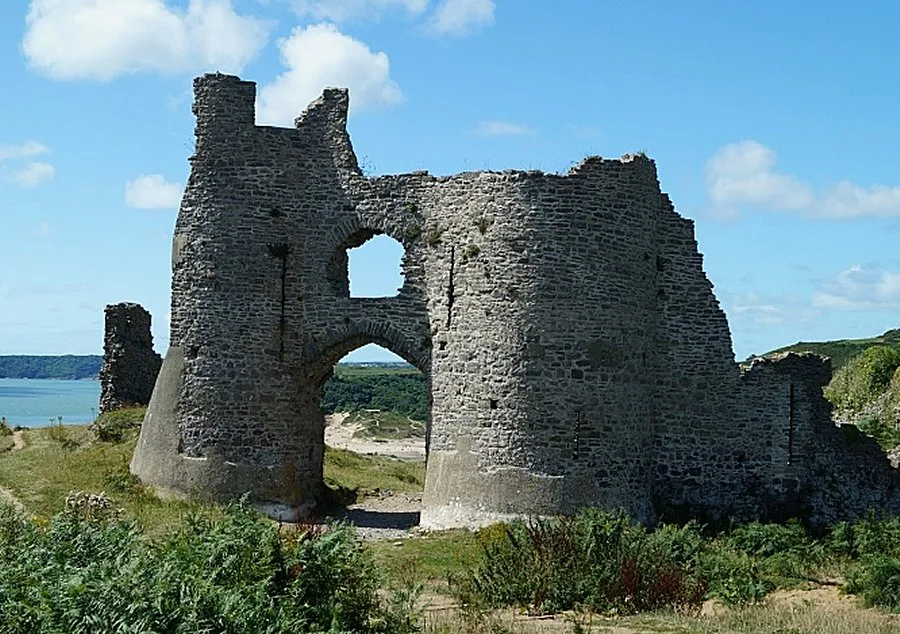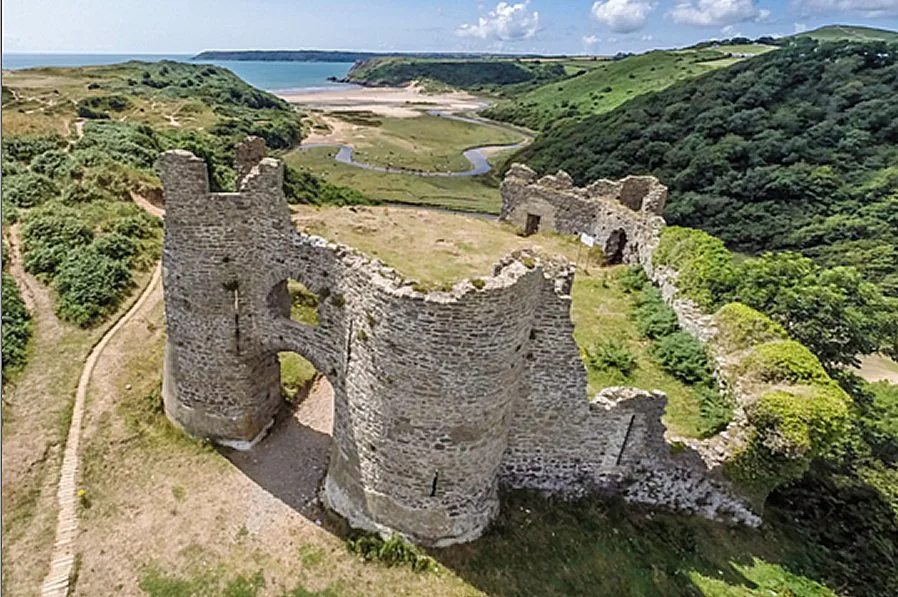Pennard Ruins Castle is a ruined fortress located near the Welsh village of Pennard, on the Gower Peninsula (area of Swansea, South-East Wales), and built between the early 12th century and late 13th century or early 14th century. It was the residence of the Lords of Gower. The castle is classified as a Grade II listed building.
 |
| Pennard Ruins Castle |
The original keep was probably built in the early 12th century by Henry De Beaumont, 1st Earl of Warwick, who in 1107 had become Lord of Gower. The original building consisted of a circular wooden fort surrounded by a moat. The building was later rebuilt in stone in the late 13th to early 14th centuries, probably at the behest of Baron William de Braose, a member of the Braose family, who had become the owner of the Lordship of Gower in 1203. William de Braose confiscated the castle from King Edward II in 1320, as the baron wanted to give the building to his son-in-law John de Mowbray, without first obtaining permission from the crown. However, in 1321 the castle became the property of the Mowbray family. Under the Mowbrays a town grew up around the castle (which also included a church dedicated to St. Mary), of which no trace remains. The building was abandoned, probably between the end of the 14th century and the beginning of the 15th century. In 1650 the castle is described as a "ruined fortress", although it later appeared in a 1741 engraving by the Buck brothers with the walls mostly intact. Pennard Castle was added to the British Heritage List on June 3, 1964. although it later appeared in an engraving made in 1741 by the Buck brothers with the walls almost intact. Pennard Castle was added to the British Heritage List on June 3, 1964. although it later appeared in an engraving made in 1741 by the Buck brothers with the walls almost intact. Pennard Ruins Castle was added to the British Heritage List on June 3, 1964.
 |
| Pennard Ruins Castle |
The castle stands in the Pennard Pill Valley, on a promontory overlooking Three Cliffs Bay and Pennard Burrows. The building consists of two towers and is a kind of miniature imitation of the castles made in North Wales by Edward I of England.
According to a legend, the owner of the castle would deny the local fairies the opportunity to dance at his wedding and take revenge by destroying the building in a storm.